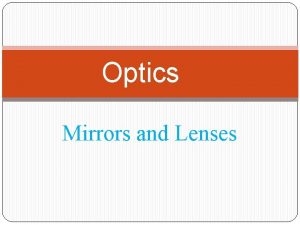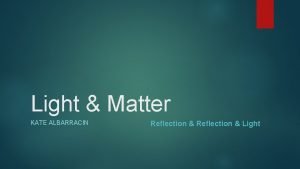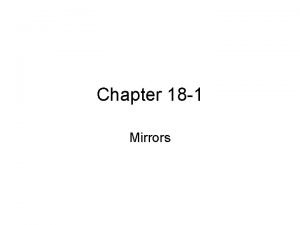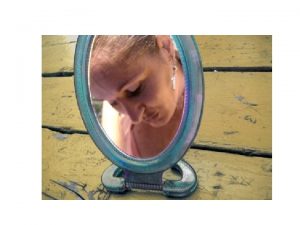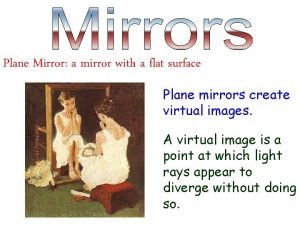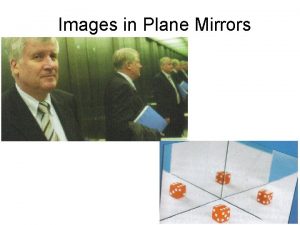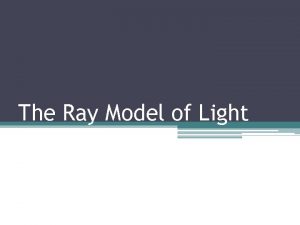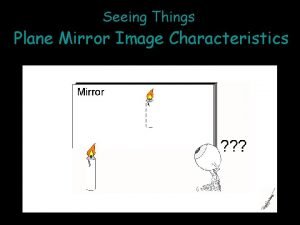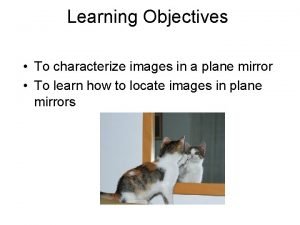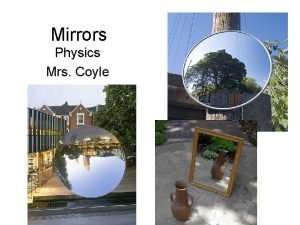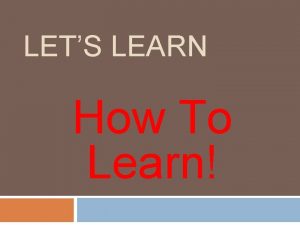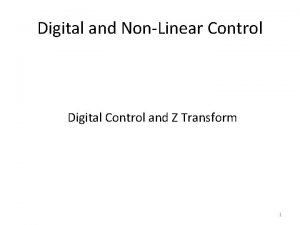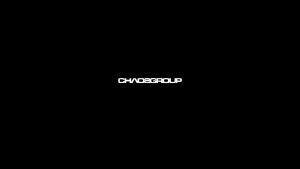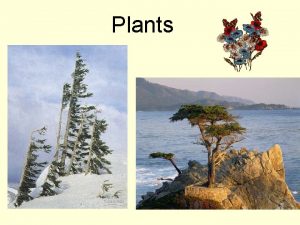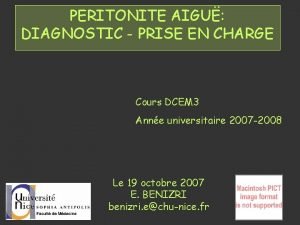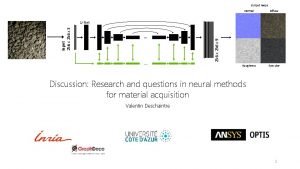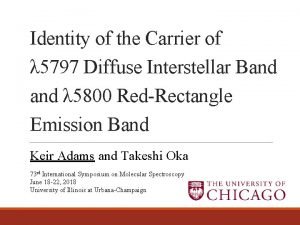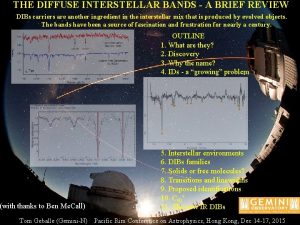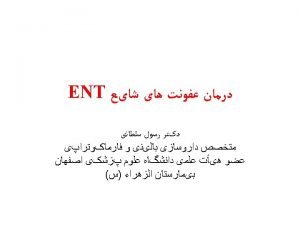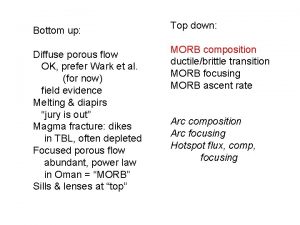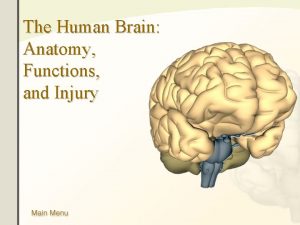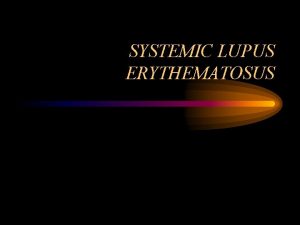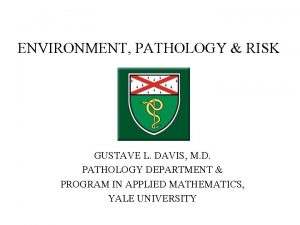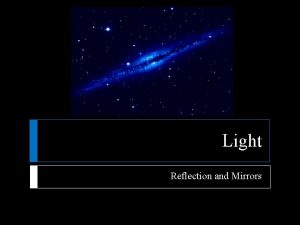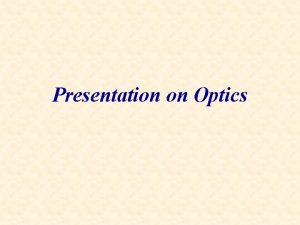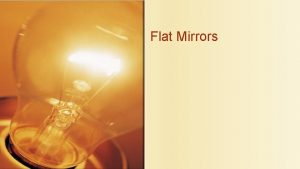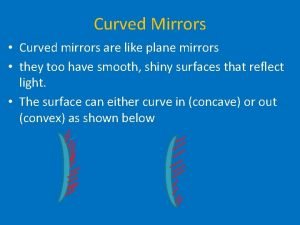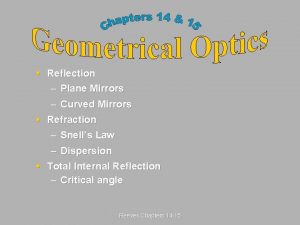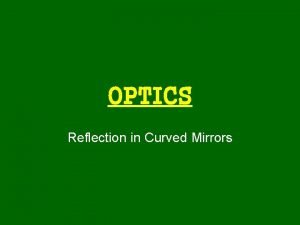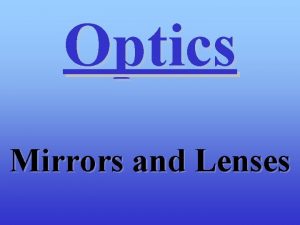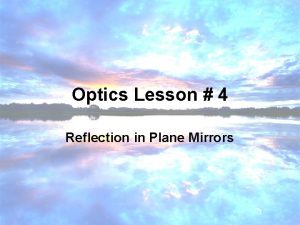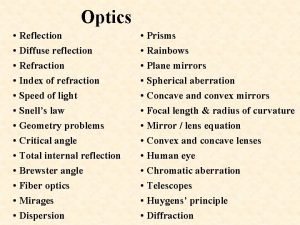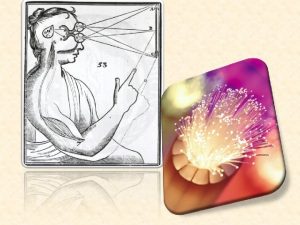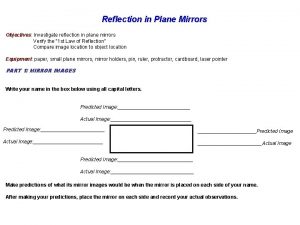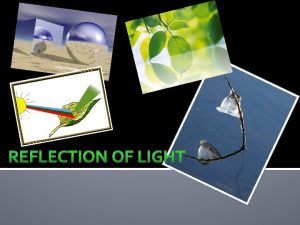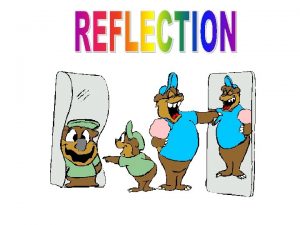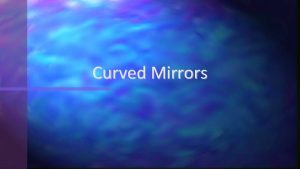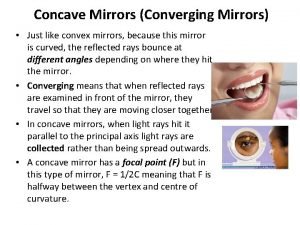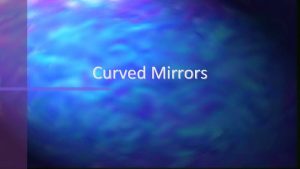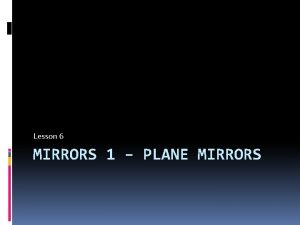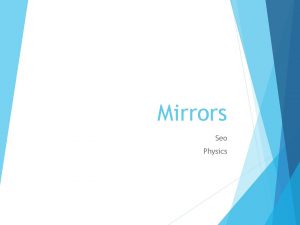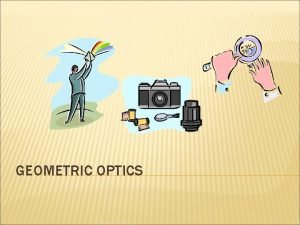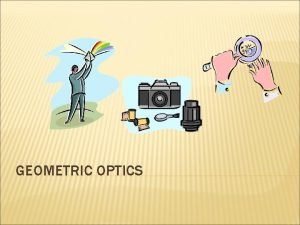Optics Mirrors and Reflection Diffuse reflection Plane mirrors








































- Slides: 40

Optics: Mirrors and Reflection • Diffuse reflection • Plane mirrors • Spherical aberration • Concave and convex mirrors • Focal length & radius of curvature • Mirror / lens equation

Optics: Mirrors and Reflection Objectives: I will discover how the incident and reflected rays are related. I will create ray diagrams for each of the cases for mirrors. I will evaluate the experimental data for the mirror laboratories in terms of the mirror equations.

Reflection Light is reflected off objects we see, since most objects don’t produce visible light. Most light is absorbed by objects. The wavelengths of the reflected light determine the colors we see. When white light hits an apple red wavelengths are reflected, most of the others are absorbed.

Reflection A ray of light heading towards an object is called an incident ray. If it reflects off the object, it is called a reflected ray.

A perpendicular line to the surface is a normal. The angle between the incident ray and normal is the angle of incidence, ے i, and the angle between the reflected ray and the normal is the angle of reflection, ے r. The law of reflection states that the angle of incidence is always equal to the angle of reflection.

Law of Reflection re fle s ray cte nt ide r dr inc i ay s Normal line (perpendicular to surface) i=r

Diffuse Reflection Diffuse reflection is when light bounces off a non-smooth surface. Each ray of light still obeys the law of reflection but is scattered.

Real vs. Virtual Images Real images are formed by mirrors when light rays actually converge and pass through the image. They are located in front of the mirror. A real image can be projected onto a piece of paper or a screen. Virtual images occur where light rays only appear to have originated. For example, sometimes rays appear to be coming from a point behind the mirror. Virtual images can’t be projected since the light rays do not really converge there.

Plane Mirror Object P P’ Virtual Image Rays from an object at point P strike the mirror and are reflected. After reflection, the rays continue to spread. When these rays are traced back behind the mirror, they intersect at point P’, where the virtual image of point P appears.

Plane Mirror The image, I, formed by a plane mirror of an object, O, appears to be a distance di , behind the mirror, equal to the object distance d o.

Plane Mirror Two rays from object P strike the mirror at points B and M. Each ray is reflected such that i = r. P h do B M di P’ h’ Image Object Mirror Triangles BPM and BP’M are congruent, which implies that do= di and h = h’. Thus, the image is the same distance behind the mirror as the object is in front of it, and the image is the same size as the object.

Plane Mirror object image With plane mirrors, the image is reversed left to right. When you raise your left hand in front of a mirror, your image raises its right hand. Why aren’t top and bottom reversed?

Concave and Convex Mirrors Concave and convex mirrors are curved mirrors. light rays Convex mirrors reflect light from their outer surface. light rays Concave mirrors reflect light from their inner surface.

Concave Mirrors • Concave mirrors are spherical and have a principal axis that goes through the center, C, of the imagined sphere and ends at the point at the center of the mirror, A. The principal axis is perpendicular to the surface of the mirror at A.

Concave Mirrors • CA is the radius of the sphere, or the radius of curvature of the mirror, R. • Halfway between C and A is the focal point of the mirror, F. This is the point where rays parallel to the principal axis will converge when reflected off the mirror. • The length of FA is the focal length, f. • The focal length is half of the radius of the sphere (proven on next slide).

Focusing Light with Concave Mirrors Light rays parallel to the principal axis will be reflected through the focal point. In reverse, light rays passing through the focus will be reflected parallel to the principal axis.

Spherical Aberration Spherical Mirror • F • C Only parallel rays close to the principal axis of a spherical mirror will converge at the focal point. Rays farther away will converge at a point closer to the mirror. The image formed by a large spherical mirror will be a disk, not a point. This is known as spherical aberration.

Spherical Aberration Parabolic mirrors don’t have spherical aberration. They are used to focus rays from stars in a telescope. They can also be used in flashlights and headlights since a light source placed at their focal point will reflect light in parallel beams. • C F • Parabolic Mirror

Spherical vs. Parabolic Mirrors Parallel rays converge at the focal point of a spherical mirror only if they are close to the principal axis. The image formed in a large spherical mirror is a disk, not a point (spherical aberration). Parabolic mirrors focuses all parallel rays at the focal point. They are used in telescopes, flashlights and car headlights. PARABOLIC vs. SPHERICAL

Six Cases With Concave Mirrors • C F • Parabolic Mirror Case 1: All rays that arrive parallel to the principle axis converge at the focal point. (Object at infinity, image is at the focal point)

Concave Mirrors: Object beyond C object • C • F image The image formed when an object is placed beyond C is located between C and F. It is a real, inverted image that is smaller in size than the object.

Concave Mirrors: Object beyond C object • C • F image The image formed when an object is placed at C is located at C. It is a real, inverted image that is the same size as the object.

Concave Mirrors: Object between C and F object • C • F image The image formed when an object is placed between C and F is located beyond C. It is a real, inverted image that is larger in size than the object.

Concave Mirrors: Object in front of F object • C • F image The image formed when an object is placed in front of F is located behind the mirror. It is a virtual, upright image that is larger in size than the object. It is virtual since it is formed only where light rays seem to be diverging from.

Concave Mirrors: Object at F object • C • F No image is formed when an object is placed F since the rays come off parallel. The image is “infinitely large and located at infinity. ”

Convex Mirrors light rays • A convex mirror has the same basic properties as a concave mirror but its focus and center are located behind the mirror. • This means a convex mirror has a negative focal length. • Light rays reflected from convex mirrors diverge, so only virtual images will be formed.

Convex Mirrors light rays • Rays parallel to the principal axis will reflect as if coming from the focus behind the mirror. • Rays approaching the mirror on a path toward F will reflect parallel to the principal axis.

Convex Mirror Diagram object image • F • C The image formed by a convex mirror no matter where the object is placed will be virtual, upright, and smaller than the object. As the object is moved closer to the mirror, the image will approach the size of the object.

Mirror/Lens Equation Derivation ΔABO ≈ ΔA’B’O AB/BO = A’B’/B’O A • O F B object • C B’ image A’ di AAA Ratio of sides of similar triangles Since AB is the object height, hi, and A’B’ is the image height, ho, and BO is the object distance from the mirror, do, and B’O is the image distance from the mirror, di, then through substitution: ho/do = hi/di and by rearrangement hi/ho = di/do = magnification do

Magnification hi By definition, m = ho m = magnification hi = image height (negative means inverted) ho = object height Magnification is simply the ratio of image height to object height. A positive magnification means an upright image.

Mirror/Lens Equation Derivation ΔABF ≈ ΔDOF AAA DO/AB=OF/BF Ratio of sides of similar triangles A • O F D B object • C B’ image A’ di do Since AB is the object height, hi, and A’B’ is equal to DO the image height, ho, and Bf is the object distance minus the focal length, do- f and OF is the focal length, f, then through substitution: hi/ho = f/do - f

Mirror/Lens Equation Derivation hi/ho = f/do – f Since hi/ho = di/do A • O F D B object • C Then B’ di do By cross multiplying image A’ di/do = f/do – f dido – dif = dof By dividing everything by a common didof and canceling out like terms the mirror equation is derived. 1/f = 1/do + 1/di

Mirror Sign Convention 1 1 1 f = di + do f = focal length di = image distance do = object distance di + for real image - for virtual image + for concave mirrors f - for convex mirrors

Magnification hi By definition, m = ho m = magnification hi = image height (negative means inverted) ho = object height Magnification is simply the ratio of image height to object height. A positive magnification means an upright image.


Mirror Equation Sample Problem • C • F Suppose All. Star, who is 3 and a half feet tall, stands 27 feet in front of a concave mirror with a radius of curvature of 20 feet. Where will his image be reflected and what will its size be? di = 15. 88 feet hi = -2. 06 feet

Mirror Equation Sample Problem 2 • F • C Casey decides to join in the fun and she finds a convex mirror to stand in front of. She sees her image reflected 7 feet behind the mirror which has a focal length of 11 feet. Her image is 1 foot tall. Where is she standing and how tall is she? d =19. 25 feet o ho = 2. 75 feet

Credits Snork pics: http: //www. geocities. com/Enchanted. Forest/Cottage/7352/indosnor. html Snorks icons: http: //www. iconarchive. com/icon/cartoon/snorks_by_pino/ Snork seahorse pic: http: //members. aol. com/discopanth/private/snork. jpg Mirror, Lens, and Eye pics: http: //www. physicsclassroom. com/ Refracting Telescope pic: http: //csep 10. phys. utk. edu/astr 162/lect/light/refracting. html Reflecting Telescope pic: http: //csep 10. phys. utk. edu/astr 162/lect/light/reflecting. html Fiber Optics: http: //www. howstuffworks. com/fiber-optic. htm Willebrord Snell and Christiaan Huygens pics: http: //micro. magnet. fsu. edu/optics/timeline/people/snell. html Chromatic Aberrations: http: //www. dpreview. com/learn/Glossary/Optical/Chromatic_Aberrations_01. htm Mirage Diagrams: http: //www. islandnet. com/~see/weather/elements/mirage 1. htm Sir David Brewster pic: http: //www. brewstersociety. com/brewster_bio. html pics: http: //www. polarimage. fi/ http: //www. greatestplaces. org/mirage/desert 1. html http: //www. ac-grenoble. fr/college. ugine/physique/les%20 mirages. html Diffuse reflection: http: //www. glenbrook. k 12. il. us/gbssci/phys/Class/refln/u 13 l 1 d. html Diffraction: http: //hyperphysics. phy-astr. gsu. edu/hbase/phyopt/grating. html Mirage

Concave Mirror Ray Diagrams Simulation for the image location from a concave mirror.

Law of Reflection Simulation of reflection from a plane mirror
 Regular reflection
Regular reflection Difference between ray optics and wave optics
Difference between ray optics and wave optics Reflection and refraction venn diagram
Reflection and refraction venn diagram Data plane control plane and management plane
Data plane control plane and management plane Regular vs diffuse reflection
Regular vs diffuse reflection Plane and curved mirrors
Plane and curved mirrors Chapter 17 reflection and mirrors
Chapter 17 reflection and mirrors Physics
Physics What is the term for a mirror with a flat surface?
What is the term for a mirror with a flat surface? How does salt help you describe the properties of an image
How does salt help you describe the properties of an image Transparent ray model
Transparent ray model Plane mirror salt
Plane mirror salt All images in plane mirrors are apex
All images in plane mirrors are apex M = di/do
M = di/do Focus mode and diffuse mode
Focus mode and diffuse mode Diffusion vs effusion
Diffusion vs effusion Mpls control plane and data plane
Mpls control plane and data plane Digital control
Digital control Vray light temperature
Vray light temperature Diffuse sozialbeziehung oevermann
Diffuse sozialbeziehung oevermann Diffuse secondary growth
Diffuse secondary growth Chargé de cours
Chargé de cours Diffuse roughness
Diffuse roughness Reflexion diffuse
Reflexion diffuse Esophageal spasm
Esophageal spasm Religioni più diffuse
Religioni più diffuse How does popular culture diffuse
How does popular culture diffuse Diffuse interstellar bands
Diffuse interstellar bands How does folk culture diffuse
How does folk culture diffuse Chapter 5 ap human geography
Chapter 5 ap human geography Kenetic particle theory
Kenetic particle theory Diffuse interstellar bands
Diffuse interstellar bands Laryngitis
Laryngitis Ambient diffuse specular
Ambient diffuse specular Lung disease
Lung disease Detyra tekstuale
Detyra tekstuale Diffuse adenomyosis
Diffuse adenomyosis What part of the brain is responsible for what
What part of the brain is responsible for what Serositis
Serositis Diffuse superficial keratitis
Diffuse superficial keratitis Mesothelioma
Mesothelioma
